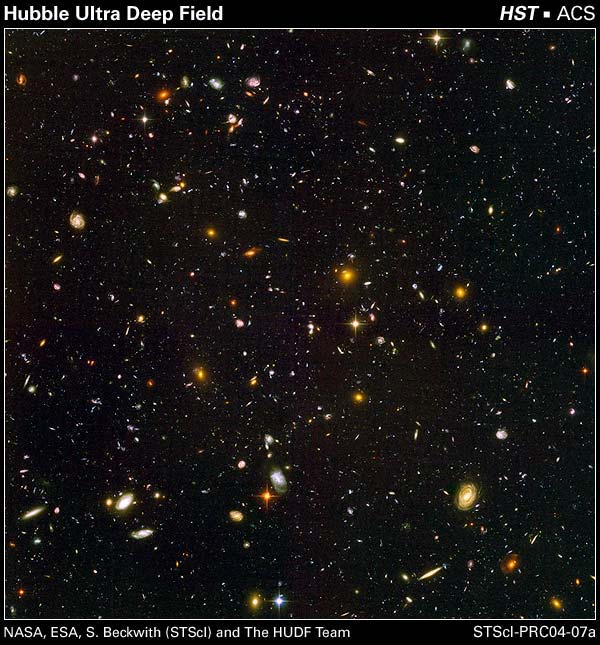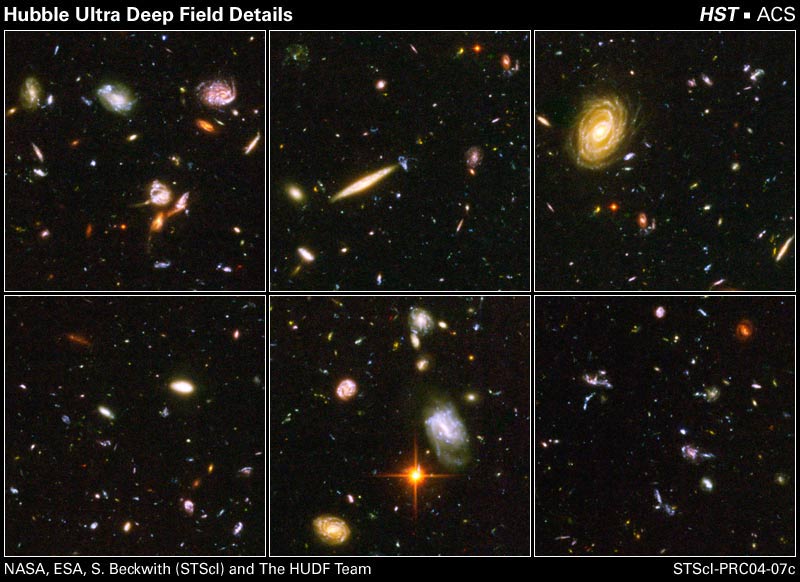Amenhotep7
Spartiate
Hubble Images Show Deepest Universe View
BALTIMORE (March 9) - Astronomers at the Space Telescope Science Institute released the deepest-ever view of the universe Tuesday, a long-duration exposure that reached out to a point just a few hundred million years from the Big Bang.
Officials said the Hubble image contains an estimated 10,000 galaxies, and astronomers around the world will now search in this field of view for the most distant objects known.
Steven V. W. Beckwith, director of the institute, said the long-duration exposure by the orbiting space telescope collected light that has been streaking through space for more than 13 billion years and started its journey when the universe was only 5 percent of its present age, believed to be about 13.7 billion years.
"For the first time, we're looking back at stars that are forming out of the depths of the Big Bang," Beckwith said. "We're seeing the youngest stars within a stone's throw of the beginning of the universe."
The images were collected by focusing the Hubble's instruments at a single point in the sky for 1 million seconds, an exposure that took more than 400 orbits of the space telescope.
Beckwith said finding the faintest objects in the long-term exposure, called the Hubble Ultra Deep Field, is like trying to collect the light from a firefly hovering over the moon.
The images were collected over four months starting last September.
The portion in the sky imaged by the Hubble was very small and astronomers compared it to looking at the sky through an 8-foot long soda straw.
Researchers will now take the images and search for the most distant objects and study the 10,000 galaxies, some of which are in bizarre and unusual shapes.
The Big Bang theory holds that the universe started with an immense explosion and that the universe then cooled and became a place of darkness, lacking stars and galaxies.
About 300 million years after the Big Bang, stars and galaxies began to form and that would be the limit of the physical universe.
Probing that frontier must await a larger telescope, which NASA plans to launch in 2011. That instrument, called the James Webb Telescope, is expected to reach to the very edge of the dark ages.
Researchers at the institute say a quick look at the ultra-deep first images shows a wide range of galaxies in different sizes, shapes and colors. Many of them seem to be interacting with their gravitations, attracting and ripping each other apart and forming strange shapes.
Astronomers said at the time these galaxies are imaged, the universe was much smaller and the galaxies were much closer together, thus causing chaotic collisions and changes in galactic structure.
Wonderful news!
 I wonder if we can gain more knowledge from this, like know more about how the universe began!
I wonder if we can gain more knowledge from this, like know more about how the universe began!GOOD JOB, HUBBLE!
 [dance]
[dance]![Party [party] [party]](/images/smilies/partytime.gif)







